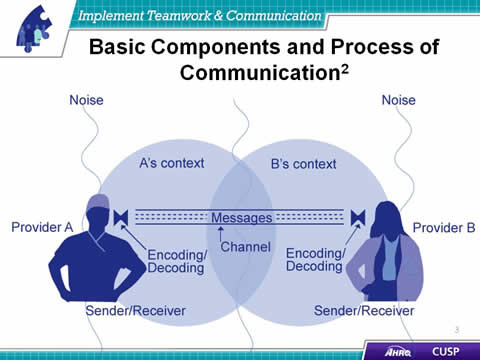

“The receiver receives the message from the source, analyzing and interpreting the message in ways both intended and unintended by the source” (McLean, 2005). Written channels include letters, memorandums, purchase orders, invoices, newspaper and magazine articles, blogs, email, text messages, tweets, and so forth.

Spoken channels include face-to-face conversations, speeches, phone conversations and voicemail messages, radio, public address systems, and Skype. “The channel is the way in which a message or messages travel between source and receiver.” (McLean, 2005). The message brings together words to convey meaning, but is also about how it’s conveyed - through nonverbal cues, organization, grammar, style, and other elements. “The message is the stimulus or meaning produced by the source for the receiver or audience” (McLean, 2005). By watching for the audience’s reaction, the source perceives how well they received the message and responds with clarification or supporting information. The source encodes the message by choosing just the right order or the best words to convey the intended meaning, and presents or sends the information to the audience (receiver). The source imagines, creates, and sends the message. The communication process can be broken down into a series of eight essential components, each of which serves an integral function in the overall process:
#3 basic elements of communication professional#
Chapter 1: Professional Business Communication 4 Eight Essential Components of Communication


 0 kommentar(er)
0 kommentar(er)
